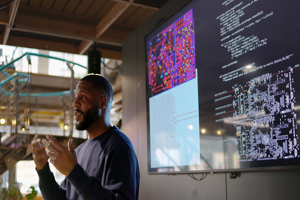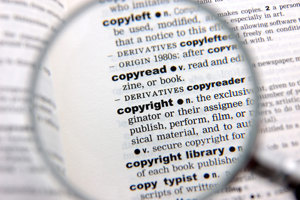The Tricky Issue of Joint Authorship in Copyright Works
The author of a copyright work is the person who creates it. This is significant because (unless the author created the work in the course of their employment) they are the first owner of the work; they decide how it is commercialised and ultimately have the right to prohibit dealings in the work without their consent.
However, where more than one person creates a work, it can be deemed a work of ‘joint authorship’ and each individual has the same rights as a sole author would. This can, however, be very difficult to establish, as the recent judgment in Martin v Kogan shows.
The case concerns a dispute over the authorship of the screenplay for the box office hit Florence Foster Jenkins. The judgment itself reads a bit like a screenplay and the case has kept the interest of copyright litigators over the past few years, and not just because of the rare decision by the Court of Appeal to order a complete retrial of the first instance judgment.
Works of Joint Authorship
A work of joint authorship requires collaboration in a quite specific sense, there must be a shared intellectual input that is not distinct from the input of the other author(s). The Judge referred to the helpful Court of Appeal summary of the relevant legal principles in the analysis of a work of joint authorship, which I have set out below. It was particularly relevant here that the work was a screenplay.
It was disputed between the claimant, Nicholas Martin, and defendant, Julia Kogan, whether the screenplay was written by Mr Martin as sole author, or whether it was in fact a collaboration between the two, as joint authors. If it was a collaboration, Mr Martin (and the film companies behind the movie) would have been infringing Ms Kogan’s IP through their commercialisation of the work.
The Evidence
The court looked in great depth at how this analysis applies in particular to a screenplay (which is a dramatic work, rather than a literary work as had previously been suggested). To prove the value of her contribution, Ms Kogan was given the opportunity to submit her ‘six best’ examples of where her contribution was not merely editorial or as a sounding board, but as a collaborative joint author.
A thing of particular relevance was that Ms Kogan was an accomplished musician. She had writing experience (although not screenplays) and had a lifelong interest in the life and music of Florence Foster Jenkins. It was clear from her evidence that, with this, she not only provided some of the key ideas and background information, but also that the two worked together in creating certain parts of the work. Further, the fact that her contribution was mainly in relation to earlier drafts of the script doesn’t mean that it wasn’t significant to the final output.
This case demonstrates just how difficult it can be to retrospectively assess what actually happened during the creative process, let alone what this means for the legal analysis. Here, the judge was highly critical of both parties for their unhelpful and often clearly false evidence. However, it is interesting that even though there were clear attempts by the witnesses to mislead the court, this did not mean that the entirety of their evidence was to be rejected.
Judgment
Having looked at each of Ms Kogans ‘six best’ in great detail, the judge concluded that she succeeded on proving joint authorship in all six. Due to the nature of dramatic works, the input of ideas, background information and particular collaboration on key scenes holds great importance (perhaps in a way that it might not in other works).
The Judge found, having considered all of the evidence (beyond the ‘best six’), that Ms Kogan was a joint author and that her contribution amounted to 20% of the work.
Comments
There are two key things to mention here:
Firstly, the judgment provides a helpful analysis on the law of joint authorship (in particular in relation to screenplays and dramatic works). There is a useful summary – set out below – to work through. Anyone who wants to appreciate just how technical the analysis can get would be well advised to read the judgement.
Whilst not always practical, it is advisable for those collaborating on a project to set out their intentions as to ownership from the outset (preferably in a written contract). It is also critical to record the relative contributions of each individual as and when they are creating a work. Much of the difficulty for the court in this case was that the evidence was largely oral assertions from the claimant and defendant (who were not necessarily reliable witnesses).
Secondly, it will be interesting to see where this judgment might take us. It seems that there is almost a blurring here of the line between ideas (which are not protectable) and the expression of those ideas (which are), at least in relation to dramatic works. Although this analysis is very fact specific and the Judge confirms that the relevance of the ideas is heightened due to the nature of the work in question, it is an interesting development and could lead to some interesting arguments in the future.
Summary of Legal Principles
The Court of Appeal summarised these as follows:
- A work of joint authorship is a work produced by the collaboration of all the people who created it;
- There will be a collaboration where those people undertake jointly to create the work with a common design as to its general outline, and where they share the labour of working it out;
- Derivative works do not qualify. Works where one of the putative authors only provides editorial corrections or critique, but where there is no wider collaboration, do not qualify. Ad hoc suggestions of phrases or ideas where there is no wider collaboration do not qualify;
- In determining whether there is a collaboration to create a literary or artistic work it is never enough to ask "who did the writing?". Authors can collaborate to create a work in many different ways. For example there may be joint authorship if one person creates the plot and the other writes the words, or if either or both of these types of labour is shared;
- Joint authors must be authors, in the sense that they must have contributed a significant amount of the skill which went into the creation of the work. Again, it is not correct to focus exclusively on who fixed the work in writing. The statutory concept of an author includes all those who created, selected or gathered together the detailed concepts or emotions which the words have fixed in writing;
- Contributions which are not "authorial" in the above sense do not count. What counts as an authorial contribution is acutely sensitive to the nature of the copyright work in question;
- The question of what is enough of a contribution is to be judged by the Infopaq test, i.e. whether the putative joint author has contributed elements which expressed that person's own intellectual creation. The essence of that term is that the person in question must have exercised free and expressive choices. The more restrictive the choices the less likely it will be that they satisfy the test;
- The contribution of a putative joint author must not be distinct;
- There is no further requirement that the authors must have subjectively intended to create a work of joint authorship;
- The fact that one of the authors has the final say on what goes into the work may have some relevance to whether there is a collaboration, but is not conclusive. The author with the final say must be given credit in deciding on the relative proportions of ownership, for the extra work involved in making those choices;
- It follows that the respective shares of joint authors are not required to be equal, but can reflect, pro rata, the relative amounts of their contributions.
For more information on this article, please contact Peter Byrd.







































